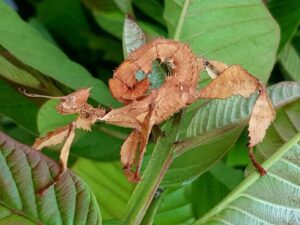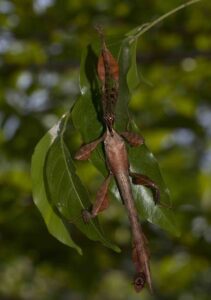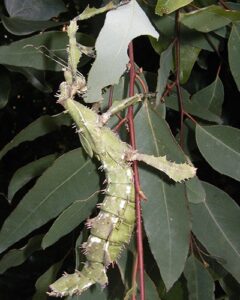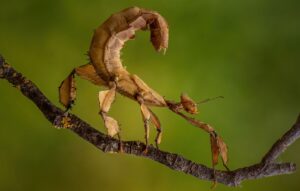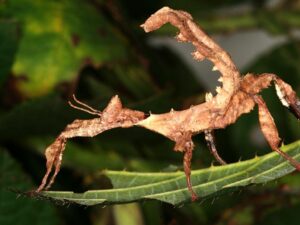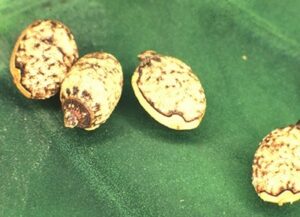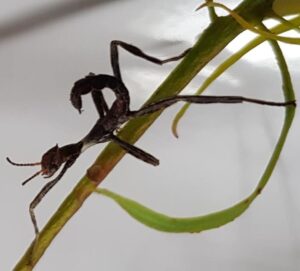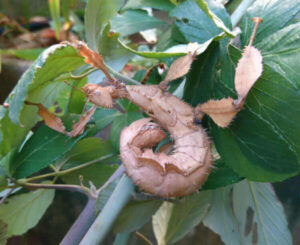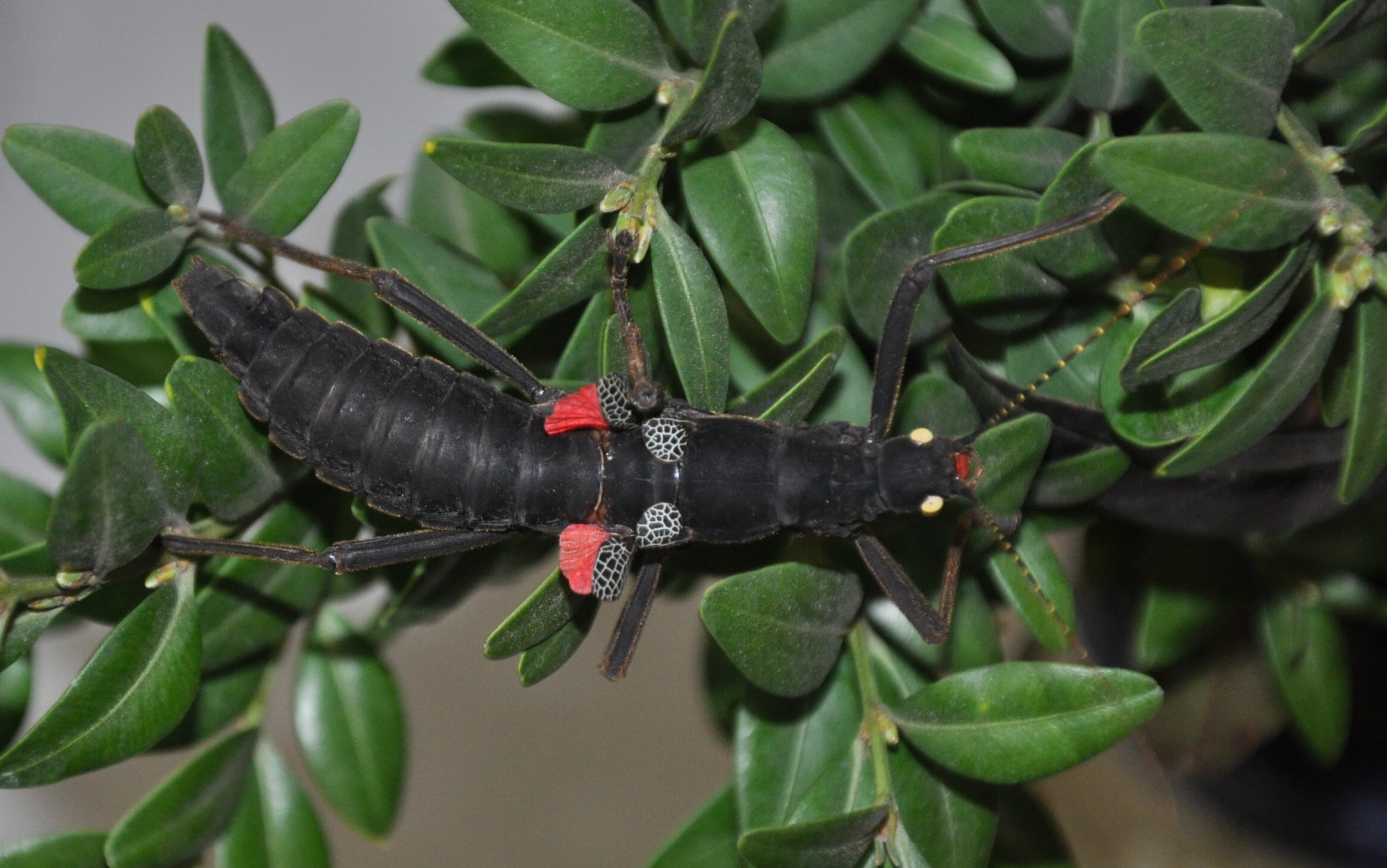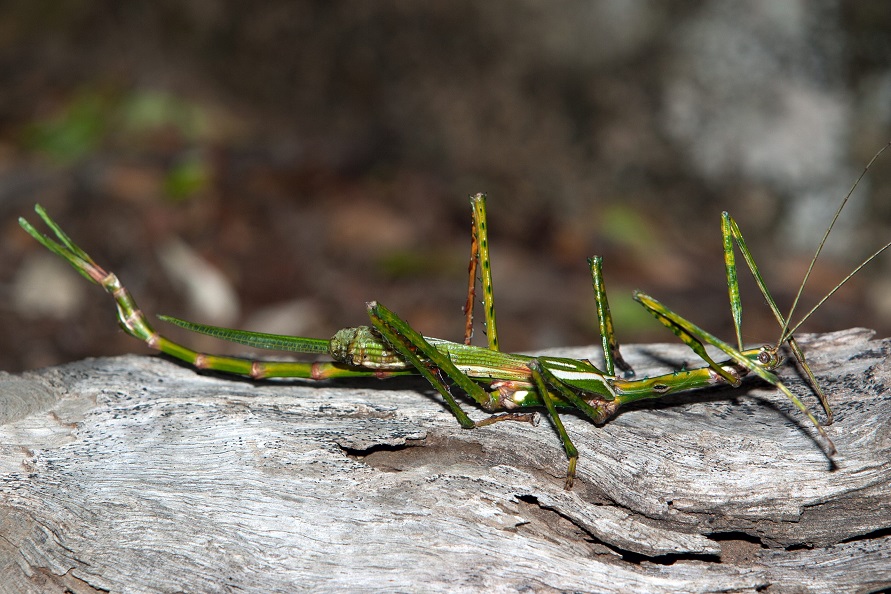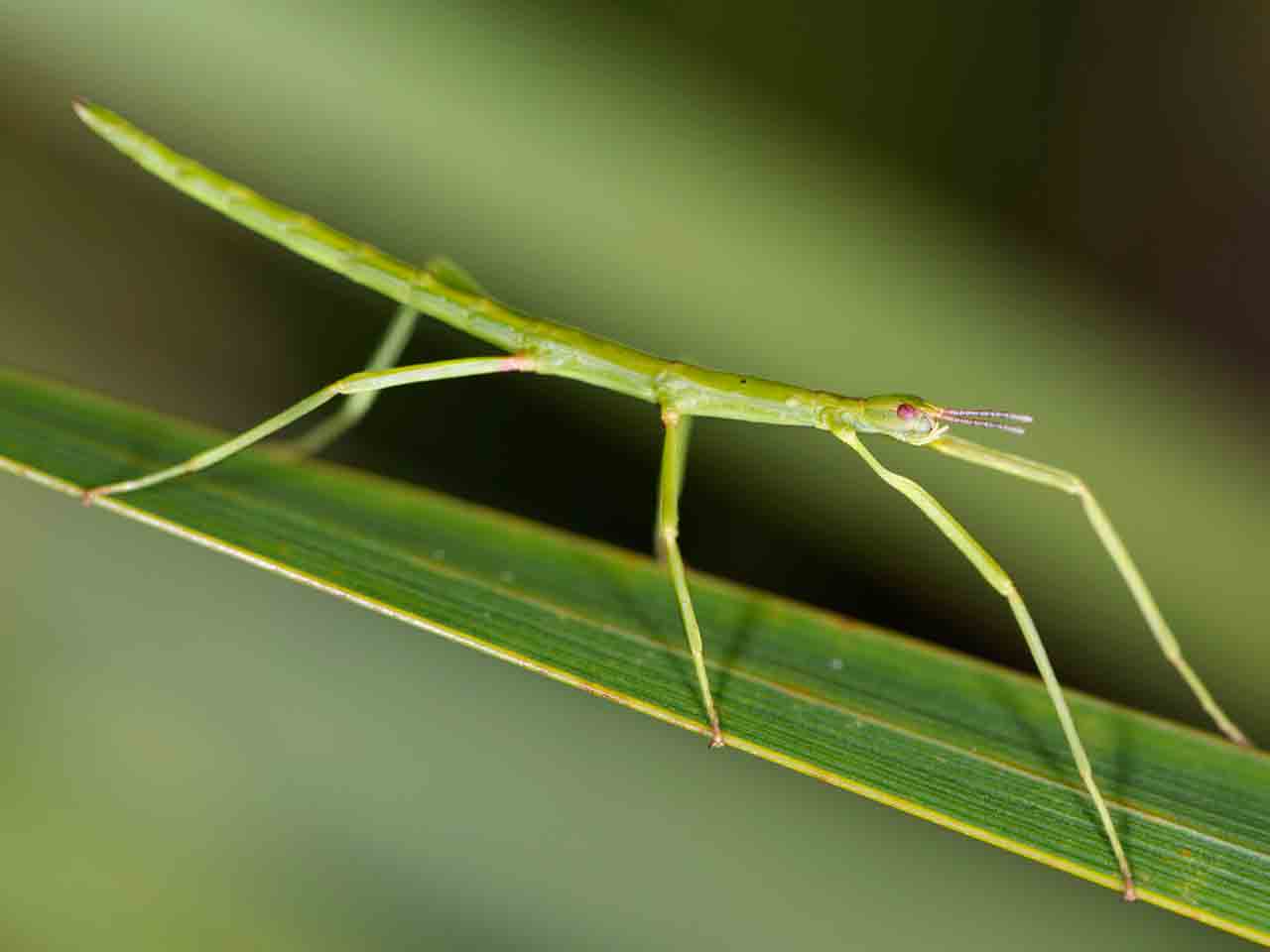Spiny Leaf Insect (Extatosoma tiaratum)
Updated on
11/01/2023The spiny leaf insect is a stick insect native to Australia. They use camouflage to remain hidden among foliage. It is a common pet, preferred due to its low maintenance.
Scientific Classification
- Class:Insecta
- Order:Phasmatodea
- Family:Phasmatidae
- Genus:Extatosoma
- Species:E.tiaratum
Conservation Status
Description and Identification
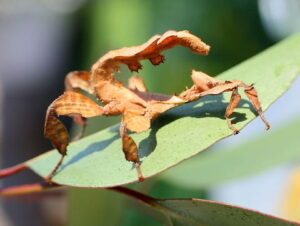
Sexual dimorphism exists in this species as the males are petite
and thinner and grow only about 4.3 inches, while females are long, heavy-bodied, and grow to about 7.9 inches long. Females have thorn-like spikes all over their bodies which males mostly lack except for the ones on their faces. Males have long wings and are good flyers who quickly fly if disturbed or in search of females. The female’s wings are too small for flying.
The color of these insects vary, with individual specimens appearing brown, cream, green, mottled brown, reddish, white, or yellowish.
Other Common Names: Australian walking stick, giant prickly stick insect, Macleay’s spectre
Distribution: Native – New South Wales and Queensland in Australia; Invasive – New Guinea
Habitat: In plant debris or foliage
Do they bite: No
Lifespan: Males – 6-8 months; Females – 18 months
Predator: Birds, mantids
Behavior and Characteristics
Feeding
In the wild, they consume the leaves of plants in the genus Eucalyptus. But in captivity, their diet can be more varied.
However, it should be noted that if these insects do not feed on Eucalyptus leaves, they tend to be smaller and not retain their usual coloration.
Defense Mechanism
As they cannot bite or sting, they rely on their natural camouflage capabilities to avoid predators. It adopts a curved pose, hanging inverted amongst the foliage, and actively moves when disturbed or a gust of wind blows past. This motion confuses predators into thinking they are a part of the foliage of the trees they reside on.
They also have a threat pose, pointing their abdomen up and standing on the front and middle legs, making them appear like scorpions. As a further warning, adults generate clicking sounds and release a toffee-like odor. Males try to startle predators by flashing their wings.
Life Cycle
Though the spiny leaf insect reproduces via sexual reproduction, they also exhibit parthenogenesis when no males are present in the population.
1. Egg Stage
After laying the eggs, the female “flicks” her eggs, swinging her tail several feet to land on the forest floor. Unfertilized eggs hatch after nine months and produce only females. Fertilized eggs hatch after four months.
The outer material of the eggs consists of substances that ants identify as food. The ants then carry these eggs to their colony, consume the edible part, and dump them into their waste piles. This protects the eggs from predators.
2. Nymph Stage
Newly hatched nymphs are ant mimics with an aposematic pattern—orange head, white collar, the rest black. This makes them appear toxic. They are speedy and active in their first instar and quickly make their way to the trees. However, their locomotion slows in the further instars.
Pet Care Sheet
These insects are very popular as pets and are commonly kept in classrooms and laboratories.
Enclosure: Breeders recommend a cage at least 23.6 inches high and 11.8 inches deep and wide to keep two specimens.
Temperature: They must be kept under 25 °C, or they do not hatch.
Feeding: Recommended foliage includes the leaves of bayberry, bramble, guava, hawthorn, hazel, oak, photinia, raspberry, rose, and salmonberry.
Source
butterflyhillnambour, jungledragon.com, projectnoah.org, bugsed.com, e-voice.org.uk, timetobreed.com, reptarium.cz




